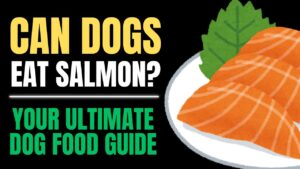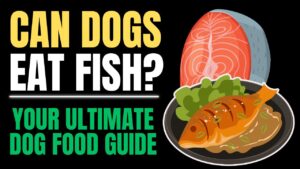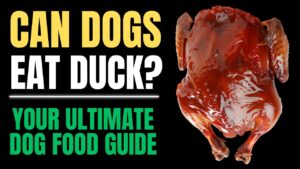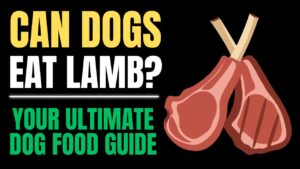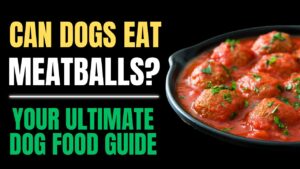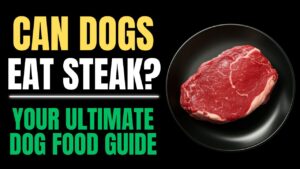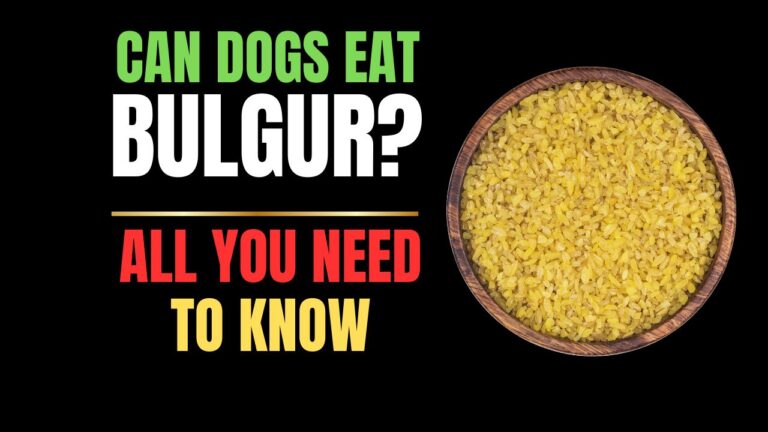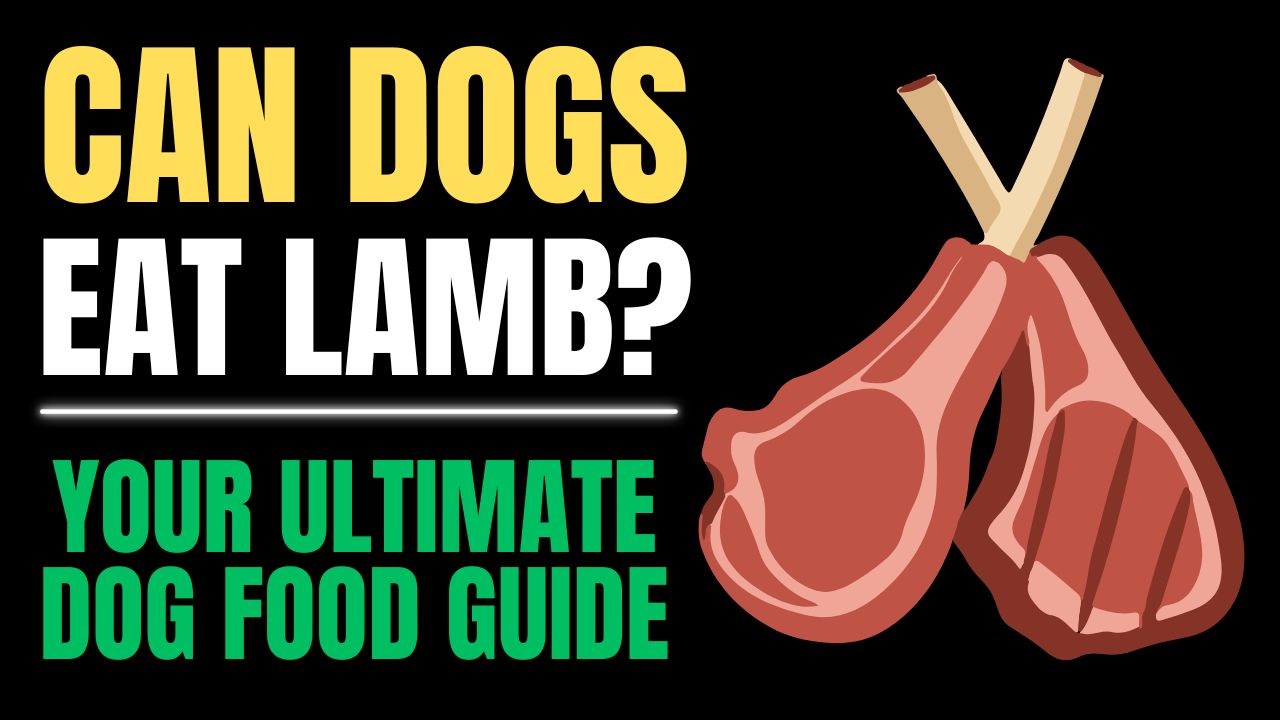
Can Dogs Eat Lamb?
Lamb is a delicious and nutrient-rich meat that many dog owners consider sharing with their canine companions. But is lamb safe for dogs, and what are the best practices for feeding it to them? The good news is that yes, most dogs can safely eat lamb as part of a balanced diet, and it's often used as a novel protein source for dogs with food sensitivities.
Lamb provides high-quality protein, essential amino acids, and important vitamins and minerals that support your dog's overall health. However, not all lamb preparations are created equal, and some methods can pose health risks to your canine companion.
In this comprehensive guide, we'll explore everything you need to know about feeding lamb to your dog—from nutritional benefits and potential risks to proper preparation techniques and serving recommendations. Whether you're considering adding lamb to your dog's regular diet or just want to share an occasional special treat, this guide will help you make informed decisions for your pet's health and wellbeing.
Introduction: Is Lamb Safe for Dogs?
Lamb is generally safe for dogs and is actually one of the most common protein sources in commercial dog foods, particularly in limited ingredient diets for dogs with food sensitivities. However, safety depends on several factors including the cut of lamb, preparation method, portion size, and your individual dog's health status.
Did You Know?
Lamb is considered a novel protein for many dogs, meaning they haven't been frequently exposed to it. This makes lamb an excellent choice for dogs with food allergies or sensitivities to more common proteins like chicken or beef. Novel proteins are less likely to trigger allergic reactions in sensitive dogs.
Quick Safety Overview
| Aspect | Safety Status | Notes |
|---|---|---|
| Plain Cooked Lamb | Generally Safe | Best when lean and unseasoned |
| Raw Lamb | Use Caution | Risk of bacterial contamination |
| Lamb Bones | Not Recommended | Can splinter and cause injuries |
| Seasoned Lamb | Avoid | May contain toxic ingredients |
| Fatty Cuts | Limited Quantities | Can cause pancreatitis |
Nutritional Benefits of Lamb for Dogs
Lamb is packed with essential nutrients that support your dog's overall health, from muscle development to immune function and coat health.
High-Quality Protein
20-25g per 100g
Lamb provides complete protein with all essential amino acids needed for muscle maintenance, tissue repair, and overall growth. The protein in lamb is highly digestible and bioavailable for dogs.
Supports muscle health and energy
Essential Vitamins
B Vitamins & More
Rich in B12 for nerve function, B6 for metabolism, and niacin for skin health. Lamb also contains vitamin E, a powerful antioxidant that supports immune function and skin health.
Boosts energy and immune system
Important Minerals
Zinc, Iron, Selenium
Excellent source of zinc for immune function and skin health, iron for oxygen transport, and selenium as a powerful antioxidant that protects cells from damage.
Supports immune and blood health
Nutritional Profile of Lean Lamb
Veterinary Perspective
According to veterinary nutritionists, lamb can be an excellent protein source for dogs, particularly those with food sensitivities. The amino acid profile of lamb protein supports healthy muscle maintenance and overall bodily functions. Many veterinary prescription diets feature lamb as a novel protein source for dogs with allergic skin conditions or digestive issues related to food sensitivities.
Potential Risks & Side Effects to Watch For
While lamb is generally safe for dogs, there are several potential risks and side effects that responsible pet owners should be aware of.
Bacterial Contamination
Raw or undercooked lamb can contain harmful bacteria like Salmonella, E. coli, and Campylobacter, which can cause serious illness in dogs. While dogs have more acidic stomachs than humans that can handle some bacteria, they're not immune to foodborne illnesses.
Pancreatitis Risk
High-fat lamb cuts or excessive amounts of lamb can trigger pancreatitis, a serious inflammation of the pancreas. This is particularly concerning for small breeds, overweight dogs, and those with previous pancreatic issues.
Food Allergies and Intolerances
While less common than chicken or beef allergies, some dogs can develop allergies to lamb. Symptoms can include itching, skin inflammation, ear infections, and digestive upset. If your dog shows these signs after eating lamb, consult your veterinarian.
Emergency Warning Signs
Seek immediate veterinary care if your dog shows any of these symptoms after eating lamb: vomiting, diarrhea (especially with blood), lethargy, abdominal pain, difficulty breathing, or swelling around the face. These could indicate a severe allergic reaction, pancreatitis, or other serious condition requiring immediate medical attention.
Nutritional Imbalance
Feeding too much lamb without balancing with other nutrients can lead to deficiencies in calcium, fiber, and certain vitamins. Lamb alone doesn't provide complete nutrition for dogs and should be part of a balanced diet.
Best Cuts of Lamb for Dogs (and Which to Avoid)
Not all lamb cuts are equally suitable for dogs. Choosing the right cut can minimize risks and maximize nutritional benefits.
Best Cuts
Lean Options
Lamb loin, leg of lamb, and lamb shank are excellent choices for dogs. These cuts are typically leaner with less marbling, reducing the risk of pancreatitis and digestive upset.
Lower fat content
Moderate Cuts
Use in Moderation
Lamb chops and lamb shoulder can be fed occasionally in small amounts. These cuts have more marbling, so trim visible fat and serve smaller portions.
Higher fat content
Cuts to Avoid
High Risk
Lamb breast and highly marbled cuts should generally be avoided due to their high fat content. These significantly increase the risk of pancreatitis and other health issues.
Highest fat content
Special Considerations
- Lamb fat: Trim visible fat before cooking to reduce pancreatitis risk
- Ground lamb: Choose lean ground lamb (90% lean or higher)
- Lamb bones: Avoid cooked bones as they can splinter and cause injuries
- Organ meats: Lamb liver and kidney are nutrient-dense but should be limited to 5% of diet
Quality Matters
When selecting lamb for your dog, choose high-quality cuts from reputable sources. Look for bright red color with white (not yellow) fat, and avoid meat that appears slimy or has an off odor. Grass-fed lamb typically has a better fatty acid profile with more omega-3s compared to grain-fed lamb, though both are safe for dogs when prepared properly.
Cooked vs Raw Lamb — What's Safer?
Both cooked and raw lamb have their proponents, but each approach carries different risks and benefits for canine consumption.
Cooked Lamb
Cooked lamb is safer for most dogs as cooking destroys harmful bacteria and parasites. Baking, boiling, or grilling without oils or seasonings preserves nutrients while making the meat safer to consume. Cooking also makes the protein more digestible for many dogs.
Recommended for: Most dogs, especially puppies, seniors, and immunocompromised dogs
Raw Lamb
While some advocate for raw feeding, raw lamb carries risks of bacterial contamination and parasite transmission. Dogs with compromised immune systems, cancer, or those taking immunosuppressive medications should never consume raw lamb due to increased infection risk.
Considerations: Higher risk of foodborne illness, requires strict food safety
Cooking Recommendations
- Cook lamb to an internal temperature of at least 145°F to kill harmful bacteria
- Choose cooking methods that don't require added fats or oils
- Avoid charring or burning the meat, which can create carcinogens
- Allow lamb to cool completely before serving to your dog
- Cut into appropriate bite-sized pieces for your dog's size
Raw Feeding Considerations
If you choose to feed raw lamb, select high-quality, human-grade meat from reputable sources. Practice strict food safety measures including separate preparation areas, thorough cleaning, and proper storage. Be aware that raw feeding may not be suitable for all dogs, and many veterinarians recommend against it due to health risks. Always consult your veterinarian before starting a raw diet.
Is Seasoned or Spiced Lamb Harmful?
Seasonings, marinades, and cooking additives commonly used with lamb can pose serious health risks to dogs.
Salt and Sodium
Excessive salt can lead to sodium ion poisoning in dogs. Symptoms include vomiting, diarrhea, excessive thirst, tremors, and in severe cases, seizures or death. Avoid feeding lamb that has been salted during preparation.
Toxic Spices and Herbs
Many common lamb seasonings are toxic to dogs:
- Onion and garlic: Can cause hemolytic anemia
- Rosemary and mint: Large amounts can cause digestive upset
- Certain spice blends: May contain toxic ingredients
- Pepper and chili: Can cause stomach irritation
Marinades and Sauces
Avoid feeding dogs lamb that has been marinated or served with sauces, as these often contain:
- Wine or alcohol: Toxic to dogs
- Sugar and sweeteners: Xylitol is extremely toxic
- Vinegar and acidic ingredients: Can upset stomach
- Soy sauce and Worcestershire: High in sodium
High-Risk Seasonings
Onion and garlic powder are particularly dangerous as they're concentrated forms that can easily reach toxic levels. These ingredients damage red blood cells, leading to hemolytic anemia—a condition that requires immediate veterinary treatment and can be fatal if not addressed promptly. Always choose plain, unseasoned lamb for your dog.
Can Puppies Eat Lamb? Special Considerations
Puppies can benefit from the nutritional richness of lamb, but require special considerations due to their developing systems and specific growth requirements.
Size and Sensitivity
Puppies have smaller body mass and developing systems, making them more susceptible to digestive upset. Their growing bodies require specific nutrient balances that lamb alone cannot provide.
Nutritional Benefits
Lamb provides essential nutrients for puppy development, including high-quality protein for muscle growth, zinc for immune function, and B vitamins for energy metabolism. These nutrients support healthy growth during critical developmental stages.
Introduction Guidelines
Introduce lamb gradually after puppies are weaned, starting with tiny amounts (pea-sized for small breeds, teaspoon for large breeds). Always cook lamb thoroughly for puppies to eliminate bacterial risks to their developing immune systems.
Special Puppy Considerations
- Smaller portions: Puppies need significantly less lamb than adult dogs relative to their size
- Cooked only: Never feed raw lamb to puppies due to their developing immune systems
- Monitor closely: Watch for digestive upset or allergic reactions when introducing
- Balance with puppy food: Lamb should complement, not replace, balanced puppy food
Puppy Growth Considerations
Puppies require specific calcium-phosphorus ratios for proper bone development. While lamb is nutrient-dense, it doesn't provide the balanced nutrition of quality puppy food. Use lamb as a supplemental treat rather than a dietary staple, and ensure the majority of their nutrition comes from complete and balanced puppy food formulations.
Recommended Serving Size & Feeding Frequency
Proper portion control is essential when feeding lamb to your dog to prevent weight gain and maintain dietary balance.
Serving Size Guidelines
| Dog Size | Weight Range | Maximum Daily Lamb | Notes |
|---|---|---|---|
| Small | Under 20 lbs | 1-2 ounces | About the size of two dice |
| Medium | 20-50 lbs | 2-4 ounces | Deck of cards size portion |
| Large | 50-90 lbs | 4-6 ounces | Size of your palm |
| Giant | Over 90 lbs | 6-8 ounces | No more than 10% of daily calories |
Frequency Recommendations
- Occasional treat: 1-2 times per week
- Regular supplement: 2-3 times per week, reducing main meal accordingly
- Main protein source: Only as part of a complete and balanced commercial diet or under veterinary supervision
Calorie Considerations
Lamb should constitute no more than 10% of your dog's total daily calorie intake. The remaining 90% should come from a complete and balanced dog food. If you're adding lamb to your dog's diet, reduce their regular food accordingly to prevent weight gain. Use our dog calorie calculator to determine your dog's specific needs.
Signs of Allergic Reactions or Digestive Issues
While lamb is less allergenic than some proteins, some dogs may still experience adverse reactions. Recognizing the signs early can help you address issues promptly.
Common Symptoms of Lamb Allergy
- Skin issues: Itching, redness, hot spots, or recurrent ear infections
- Digestive problems: Vomiting, diarrhea, gas, or frequent bowel movements
- Chronic issues: Paw licking, face rubbing, or anal gland problems
- Behavioral changes: Restlessness or discomfort
Diagnosis and Management
If you suspect your dog has a lamb allergy:
- Eliminate lamb and all lamb-containing products from their diet
- Monitor symptoms for improvement over 2-3 weeks
- Consult your veterinarian for proper diagnosis
- Consider a different novel protein diet if lamb allergy is confirmed
When to See a Veterinarian
Consult your veterinarian immediately if your dog shows severe symptoms like facial swelling, difficulty breathing, or persistent vomiting after eating lamb. These could indicate a serious allergic reaction requiring medical treatment. For mild symptoms, schedule a non-emergency appointment to discuss food allergy testing and management strategies.
Healthy Alternatives if Lamb Isn't Suitable
If your dog can't tolerate lamb or you're looking for variety, there are several excellent alternative protein sources.
Other Novel Proteins
Venison, Rabbit, Duck
Other novel proteins provide similar benefits for dogs with food sensitivities. Venison is particularly lean, while duck provides healthy fats that support skin and coat health.
Good for sensitive dogs
Commercial Dog Treats
Specifically Formulated
High-quality commercial dog treats are formulated to be safe and nutritious for canine consumption. Look for limited ingredient options with novel protein sources.
Formulated for canine health
Plant-Based Options
Vegetables & Legumes
Some dogs enjoy cooked sweet potatoes, green beans, or plain canned pumpkin. These provide fiber and nutrients with minimal allergy risk.
Low-allergen options
Other Safe Alternatives
- Fish: Salmon and white fish provide omega-3 fatty acids
- Turkey: Another lean option that's often well-tolerated
- Kangaroo: Extremely novel protein for severely allergic dogs
- Eggs: Excellent source of protein and nutrients
- Goat: Similar to lamb but different enough for some allergic dogs
Transitioning to New Proteins
When switching your dog to a new protein source, transition gradually over 7-10 days by mixing increasing amounts of the new food with decreasing amounts of the old food. This helps prevent digestive upset and allows you to monitor for any adverse reactions to the new protein. For more guidance on dietary transitions, see our article on managing digestive issues.
Final Verdict: Should Lamb Be Part of a Dog's Diet?
Lamb can be a healthy and nutritious addition to most dogs' diets when prepared properly and fed in appropriate amounts. Its high-quality protein, essential amino acids, and important vitamins and minerals support overall health, muscle maintenance, and immune function. For dogs with food sensitivities, lamb often serves as an excellent novel protein source that's less likely to trigger allergic reactions.
The key to safely feeding lamb to your dog lies in proper preparation, portion control, and careful observation. Choose lean cuts, cook thoroughly without seasonings, serve in moderation, and always monitor your dog for any adverse reactions. Remember that every dog is unique, and what works for one may not work for another.
Ultimately, lamb can be a valuable part of your dog's nutritional plan when used thoughtfully. Whether as an occasional high-value training treat, a meal topper to encourage eating, or a special reward, lamb can enhance your dog's diet and provide variety. For dogs with specific food allergies or health conditions, lamb-based commercial diets or homemade preparations can offer a welcome alternative to more common protein sources.
Frequently Asked Questions
While dogs can technically eat raw lamb, it's not recommended due to the risk of bacterial contamination (Salmonella, E. coli, Campylobacter) and parasites. Cooking lamb eliminates these risks and makes the protein more digestible. If you choose to feed raw lamb, use human-grade meat from reputable sources, practice strict food safety, and consult your veterinarian about the risks and benefits for your specific dog, especially if they have a compromised immune system.
Lamb should be fed in moderation as part of a balanced diet. For most dogs, lamb can be offered 2-3 times per week as a treat or meal supplement, comprising no more than 10% of their total daily calorie intake. The frequency depends on your dog's size, health status, and overall diet. Always adjust their regular meals to account for the extra calories from lamb to prevent weight gain.
Common signs of lamb allergy in dogs include itching, skin redness or inflammation, recurrent ear infections, gastrointestinal issues (vomiting, diarrhea), paw licking, and chronic anal gland problems. Symptoms typically appear within hours to days after eating lamb. If you suspect your dog has a lamb allergy, eliminate lamb from their diet and consult your veterinarian for proper diagnosis and management.
Yes, puppies can eat lamb as part of their balanced growth diet, but with important considerations. The lamb should be thoroughly cooked, lean, unseasoned, and cut into small, manageable pieces. Introduce lamb gradually and in small amounts to monitor for any adverse reactions. Remember that puppies have specific nutritional needs for proper growth, so lamb should complement rather than replace a complete and balanced puppy food.
Both lamb and chicken offer nutritional benefits for dogs, but they serve different purposes. Chicken is more commonly used and generally less expensive, but some dogs develop allergies to it. Lamb is often used as a novel protein for dogs with food sensitivities. Nutritionally, both provide high-quality protein, though lamb tends to be higher in fat. The best choice depends on your dog's individual needs, tolerance, and any existing food sensitivities.
It's not recommended to feed dogs cooked lamb bones as they can splinter and cause serious injuries including broken teeth, mouth injuries, and digestive tract blockages or perforations. Raw lamb bones are somewhat safer but still carry risks. If you choose to give your dog raw lamb bones, select large pieces that can't be swallowed whole, supervise closely, and limit chewing sessions to 15-20 minutes to prevent tooth damage.
The best ways to cook lamb for dogs are boiling, baking, or grilling without any added oils, seasonings, or sauces. These methods preserve the nutritional value while making the meat safe and digestible. Cook lamb to an internal temperature of at least 145°F (63°C) to kill harmful bacteria. After cooking, allow the lamb to cool completely, trim any remaining visible fat, and cut into appropriate bite-sized pieces for your dog.
In the Spotlight
About the Author
Dan Su
Author
Dr. Dan Su, Board-Certified Veterinary Nutritionist® — Expert in pet nutrition dedicated to improving animal health through evidence-based care. Based in Irvine, California. Alum of Western University of Health Sciences.
